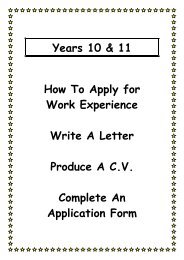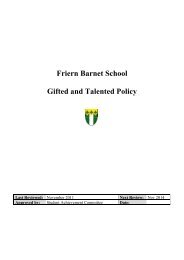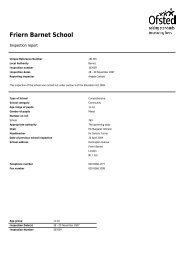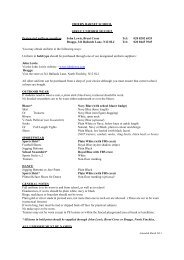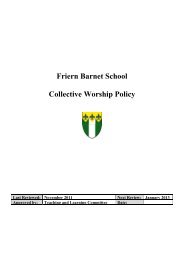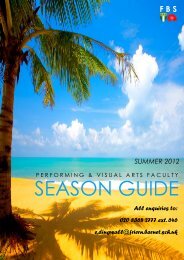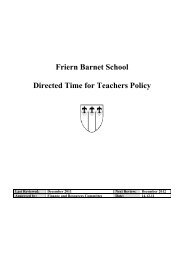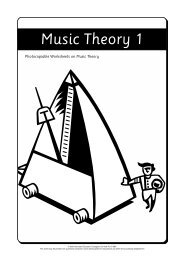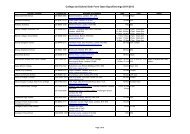VOL 166 Music Theory 2 - Friern Barnet School
VOL 166 Music Theory 2 - Friern Barnet School
VOL 166 Music Theory 2 - Friern Barnet School
You also want an ePaper? Increase the reach of your titles
YUMPU automatically turns print PDFs into web optimized ePapers that Google loves.
Name: ____________________ <strong>Music</strong> <strong>Theory</strong> 2 Worksheet<br />
OPEN SCORE<br />
In an open score each vocal line has an individual stave. The soprano and alto parts are written<br />
in the treble clef and the bass part is written in the bass clef. The awkward part is the tenor<br />
line. The tenor part is written in treble clef but an octave higher than it is actually sung. The sign<br />
to indicate this is a treble clef with a number eight attached to the bottom.<br />
The usual rules for the way that the tails are positioned up or down apply unlike in open score<br />
where the direction of the tail is dependent on the voice part. If you are writing parts out in<br />
open score group them together with a bracket and a line joining the staves together. This<br />
makes it clear where each line of music ends and the next begins. Usually the soprano, alto,<br />
tenor and bass parts are indicated by an S, A, T, B or Soprano, Alto, Tenor and Bass at the<br />
beginning of the first stave.<br />
Always try to line the parts up vertically in beats as far as possible so that the score is clear<br />
for both vocalist and conductor/accompanist.<br />
Byrd<br />
On a sheet of manuscript paper write this music out in open score.<br />
www.keynoteseducation.com © 2004 Keynotes Education Crossgate Cornwall PL15 9SX<br />
This sheet may be printed from a personal computer and/or photocopied for educational use within the purchasing establishment<br />
27




